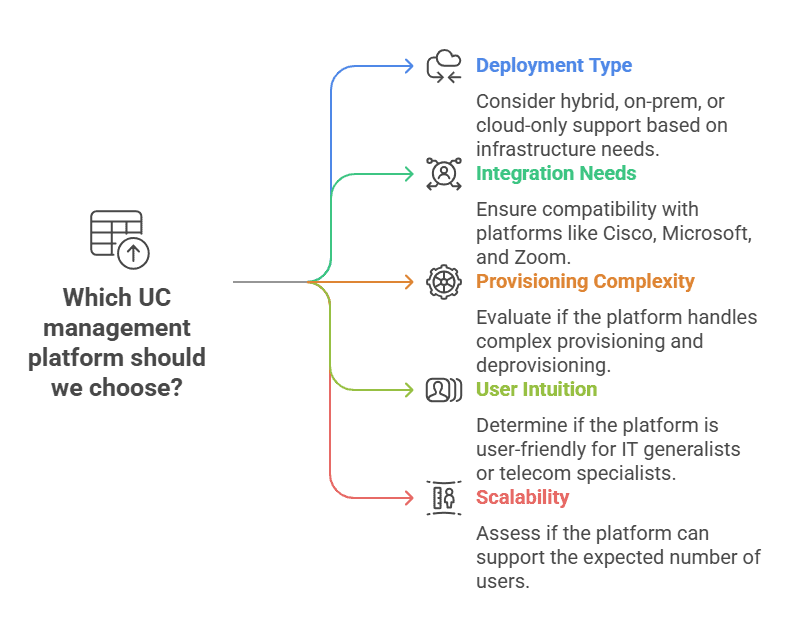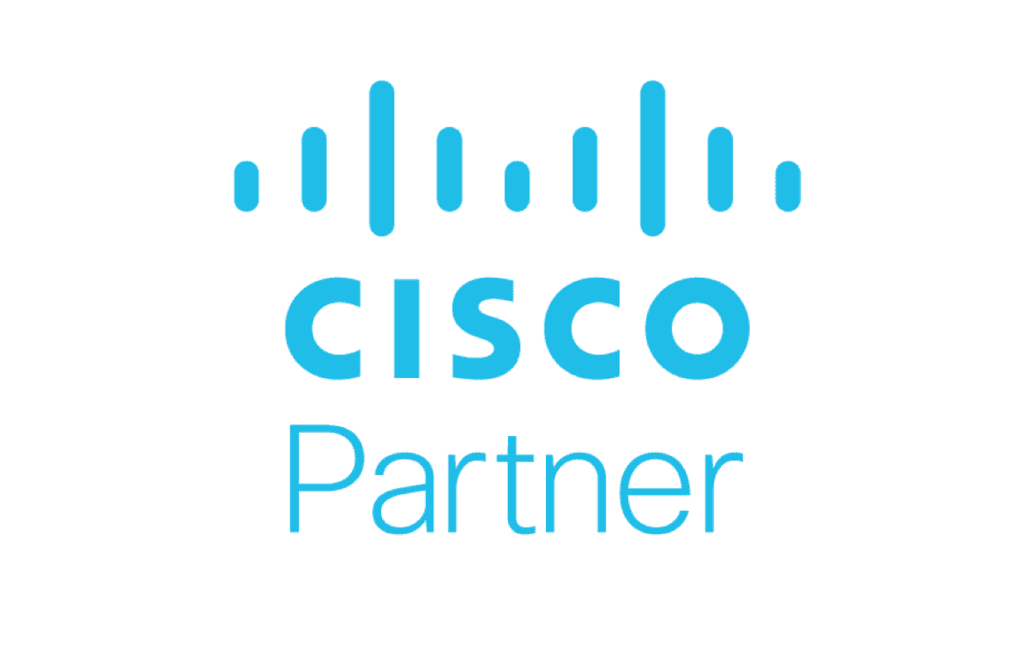What Are UC Management Tools?
Unified Communications (UC) management tools are platforms designed to help IT and communications teams efficiently manage users, devices, policies, and provisioning across complex enterprise communication systems. These platforms serve as control hubs for UC environments, which typically include telephony (VoIP), messaging, conferencing, voicemail, and integrations with productivity apps like Microsoft Teams, Cisco Webex, and Zoom.
The need for UC management systems has grown as organizations shift from legacy PBX systems and on-premises servers to hybrid and fully cloud-based UC architectures. IT teams are now responsible for not just infrastructure, but also user experience, security, and real-time analytics across multiple platforms and global sites. That’s where UC management tools step in.
Key Benefits for Business Operations
The right UC management platform brings major benefits across operational efficiency, security, and end-user satisfaction:
1. Centralized Control
UC management tools consolidate the control of multi-vendor environments, such as CUCM, Webex, and Microsoft Teams, into a single pane of glass, making system-wide changes faster and more consistent.
2. Automation of Repetitive Tasks
Tasks like onboarding/offboarding, phone number assignment, license updates, and extension provisioning can all be automated. This dramatically reduces IT workload and minimizes human error.
3. Consistency and Compliance
Automated policy enforcement ensures that security, usage, and configuration standards are met across regions and teams. This is particularly valuable for global organizations needing audit logs, compliance reporting, or data residency control.
4. Hybrid and Multi-Platform Support
In 2025, most organizations are either hybrid or planning hybrid UC. Tools that support both on-prem and cloud environments offer smoother transitions, better visibility, and long-term scalability.
5. Reduced Downtime and Faster Issue Resolution
UC management platforms often come with real-time monitoring, troubleshooting dashboards, and alerts that help teams identify issues proactively and reduce business disruptions.
Best UC Management Tools List for 2025
Below are the top 5 UC management tools to consider in 2025, evaluated for their scalability, automation capabilities, multi-vendor support, and ease of deployment.
1. Tuki Manage
Tuki Manage is a modern, cloud-native UC management system built for enterprises with hybrid, multi-cluster UC environments. Designed specifically for Cisco Webex, CUCM, and other platforms, it delivers deep automation, real-time visibility, and a unified control plane.
Why It Stands Out:
- Single pane of glass for managing multi-vendor, multi-cluster environments
- Automated provisioning, deprovisioning, and change management
- Webex Calling, Dedicated Instance (DI), and On-Prem support
- Role-based access control (RBAC) and audit trails
- Easy partner enablement with multi-tenant views
- API-ready and integration-friendly
Tuki Manage is ideal for large enterprises,SMBs and Cisco partners looking to automate UC management at scale with minimal complexity.
2. Kurmi Unified Provisioning
Kurmi is a long-standing player in the UC provisioning market, offering strong automation capabilities and pre-built connectors for platforms like Cisco, Microsoft, and Avaya. It’s best suited for large enterprises with strict compliance requirements.
Strengths:
- Extensive support for legacy systems
- Custom workflow engine
- Strong integration with Cisco CUCM and Unity
- Detailed reporting and governance features
Some users report that the interface is outdated and that onboarding new systems can take time without deep vendor knowledge.
3. Akkadian Provisioning Manager
Akkadian Labs offers a robust provisioning manager tailored for Cisco Unified Communications environments. It’s designed to simplify onboarding, offboarding, and MACD (Move, Add, Change, Delete) tasks.
Key Features:
- Visual phone editor for easy provisioning
- Integration with Active Directory and ServiceNow
- User templates for consistent provisioning
- Multi-cluster support
While powerful in the Cisco ecosystem, its feature set may be limited for organizations expanding into Microsoft Teams or Zoom.
4. VOSS Automate
VOSS Automate focuses on delivering automation, orchestration, and analytics for service providers and large enterprises. It’s one of the more complex platforms but offers exceptional customization.
What You Get:
- Flexible integration framework
- Real-time sync with CUCM and other platforms
- Multi-tenant support for MSPs
- Process orchestration for advanced use cases
Due to its architecture, VOSS may require significant configuration and ongoing management best suited for IT teams with UC expertise.
5. CallTower Connect
CallTower Connect is a management platform designed to simplify UCaaS environments that include Microsoft Teams, Cisco Webex, and Zoom. It is primarily aimed at SMBs and mid-market companies.
Highlights:
- Intuitive admin interface
- User self-service capabilities
- Strong Microsoft Teams integration
- Real-time status and troubleshooting tools
While not as advanced in multi-cluster automation as other platforms, it’s a great entry-level solution for companies moving into cloud-based unified communications.
Choosing the Right UC Management Platform

FAQ
What are the key features to look for in a UC management tool?
It’s not easy to choose the next UC management tool. When you at the point of taking a decision, look for platforms that offer:
- Automated provisioning and deprovisioning
- Centralized control for multiple UC systems
- Audit trails and policy enforcement
- Integration with identity and workflow platforms (e.g., AD, ServiceNow)
- Scalability and multi-cluster support
How do cloud-based UC management solutions differ from on-premise options?
Cloud-based tools offer faster deployment, easier updates, and better scalability. On-prem solutions may provide more customization but require ongoing maintenance, hardware, and higher IT overhead.
Can these tools integrate with existing communication systems?
Yes, most top-tier tools integrate with platforms like Cisco CUCM, Webex Calling, Microsoft Teams, and Zoom. Look for tools with open APIs or pre-built connectors for seamless integration.
What are the cost implications of switching to a new UC management tool?
While cloud-based solutions reduce hardware and labor costs, there may be licensing or onboarding fees. However, the long-term ROI is typically positive due to reduced downtime, faster provisioning, and lower support overhead.









